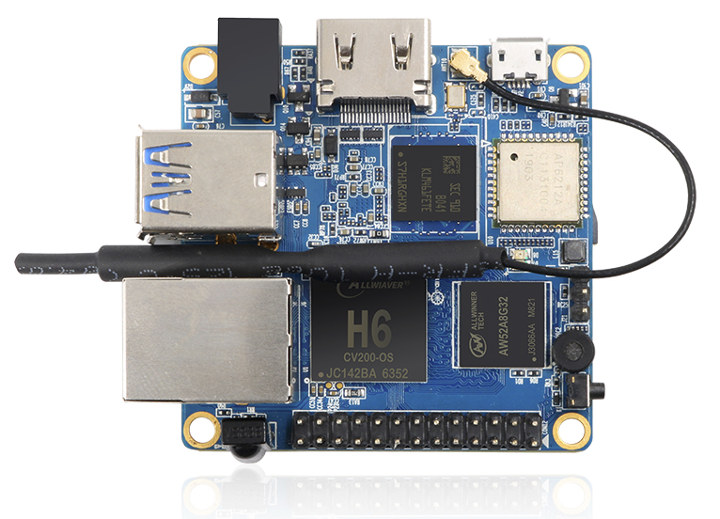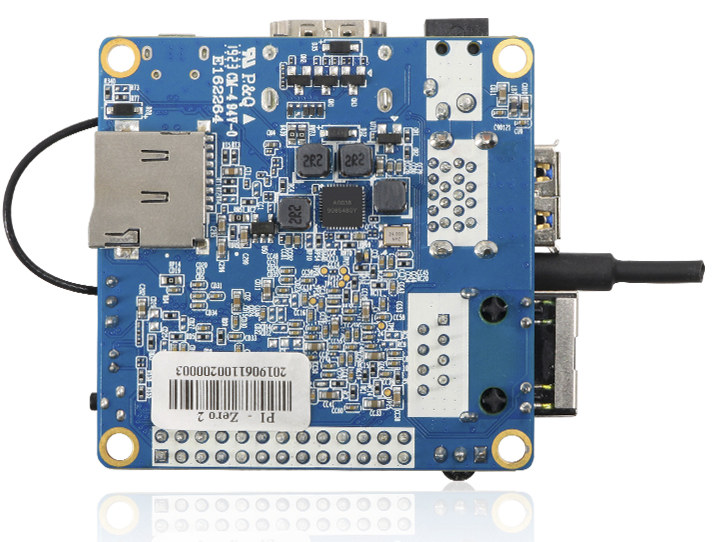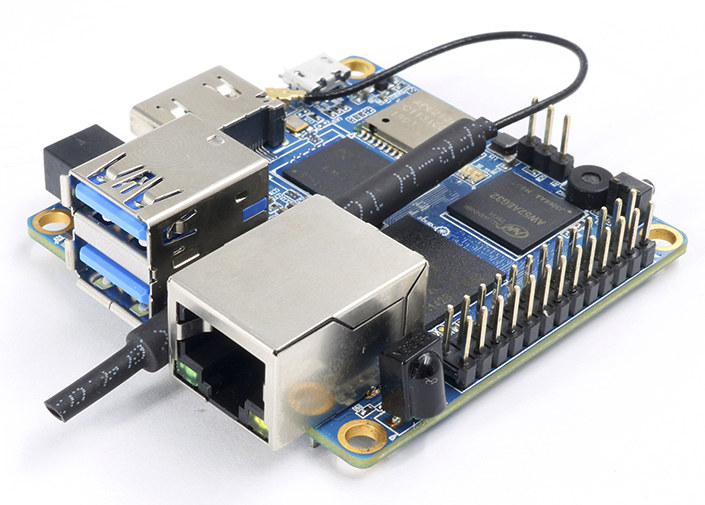Shenzhen Xunlong Software launched a refresh of their Orange Pi Zero board, namely Orange Pi Zero LTS, a couple of weeks ago. The company is now about to launch another SBC of the “Zero” family.
Slightly larger than its predecessor, Orange Pi Zero2 is also quite more powerful with an Allwinner H6 quad core Cortex-A53 processor, and more versatile thanks to the addition of a USB 3.0 port, HDMI 2.0 video output, and a built-in microphone.
 Orange Pi Zero2 specifications:
Orange Pi Zero2 specifications:
- SoC – Allwinner H6 quad-core Arm Cortex-A53 processor with Arm Mali T720 GPU with support for OpenGL ES3.1/3.0/2.0/1.1, Microsoft DirectX 11 FL9_3
- Memory – 512MB LPDDR3 (Allwinner AW52A8G32)
- Storage – 4GB eMMC Flash and microSD card up to 32GB
- Video Output – HDMI 2.0a port
- Video Decoding – 10-bit H265/HEVC up tp 4K60 or 6K30; H264/AVC up to 4K30; VP9 up to 4K30; AVS+/AVS up to 1080p60
- Network Connectivity
- 802.11 b/g/n WiFi 4 + Bluetooth 4.2 via AP6212A module
- 10/100M Ethernet
- Audio – Built-in microphone, and HDMI digital audio output
- USB – 1x USB 3.0 port, 1x USB 2.0 port; 1x micro USB 2.0 OTG port
- Expansion – 26-pin “Raspberry Pi 1” header
- Debugging – 3-pin UART header for serial console
- Misc – Power & status LEDs, IR receiver, power key
- Power Supply – 5V via micro USB OTG port or DC jack; A8038 PMU instead of the usual AXP805
- Dimensions – 55 x 55 mm
- Weight – 34 grams
It’s always frustrating to see boards with USB 3.0 and Fast Ethernet, since there’s no benefit over USB 2.0 for networked storage. But this is usually to cut costs, and in this case the PCB’s size may have been a problem to accommodate the extra transceiver required for Gigabit Ethernet.
Supported operating systems are said to be Android7.0, Ubuntu, and Debian, but this information is not always correct before launch. The good news is that Orange Pi 3 SBC, also powered by Allwinner H6 processor, is supported in Armbian, albeit only with WIP Debian 10 and Ubuntu 18.04 images, meaning they are suitable for testing, but not necessarily stable.
I asked the company about availability, and I’ll update this post once/if I get an answer. For reference, another Allwinner H6 board with a different mix of feature – Orange Pi One Plus – is selling for $20, so I’d expect Orange Pi Zero2 to sell for about the same price, or a little lower.

Jean-Luc started CNX Software in 2010 as a part-time endeavor, before quitting his job as a software engineering manager, and starting to write daily news, and reviews full time later in 2011.
Support CNX Software! Donate via cryptocurrencies, become a Patron on Patreon, or purchase goods on Amazon or Aliexpress






